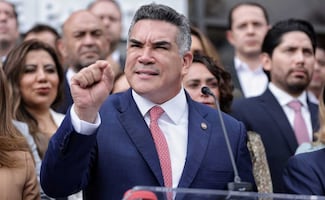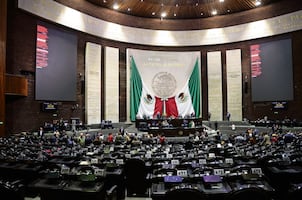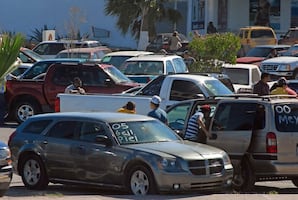Más Información

Alito Moreno afirma que México debe ser aliado de EU ante dictaduras como la de Maduro; "¡Venezuela libre ya!”

Morena va contra “Ley Esposa” en SLP que postula solo mujeres en 2027, señala Alcalde; prepara acción de inconstitucionalidad
This morning, President Donald Trump signed the USMCA , the new North American trade agreement , during a ceremony at the White House that was attended by around 400 guests but not key Democrats were invited.
Guests invited include lawmakers from around the country, workers , farmers and CEOs , as well as officials from Mexico and Canada .
Not invited were House Ways and Means Committee Chairman Richard Neal and other Democrats who negotiated to expand the pact’s labor , environmental , and enforcement provisions and ensure the approval of the House of Representatives .
“This is a cutting-edge, state-of-the-art agreement that protects, defends, and serves the great people of our country,” Trump said during the event and added that “together we are building a glorious future that is raised, grown, built and made right here in the glorious U.S.A.”
The event takes places at the same as Trump’s impeachment trial on charges of abusing power and obstructing Congress , amid signs that some of his fellow Republicans may allow the calling of witnesses.
Trump had made renegotiating the 26-year-old North American Free Trade Agreement ( NAFTA ) a major campaign issue in 2016 and plans to tout its replacement at events in the coming weeks as he campaigns for a second term.
“ USMCA rebalances trade in North America , replaces the job-killing NAFTA , ends the outsourcing of American jobs, and invests in the American worker,” he said.
Trump’s negotiator, Robert Lighthizer , pressed for an improved deal that brings factory jobs back to the United States. The new agreement, for example, requires automakers to get 75% of their production content from within North America to qualify for the pact’s duty-free benefits. That means more auto content would have to come from North America, not imported from China and elsewhere.
At least 40% of vehicles would also have to originate in places where workers earn at least USD $16 an hour. That would benefit the United States and Canada but not Mexico , where auto assembly workers are paid less than that.
Nevertheless, critics are concerned that the new agreement does not address global warming .
And Although Trump has signed the USMCA , the agreement must still be ratified by Canada before it can take effect.
The Mexican government has already approved the trade deal .
The USMCA will replace the NAFTA , a trade deal that took effect in 1994 under President Bill Clinton . The NAFTA tore down trade barriers between the three North American countries and commerce between them surged. But Trump and other critics said NAFTA encouraged factories to leave the United States and relocate south of the border to take advantage of low-wage Mexican labor .
gm
Noticias según tus intereses
[Publicidad]
[Publicidad]












